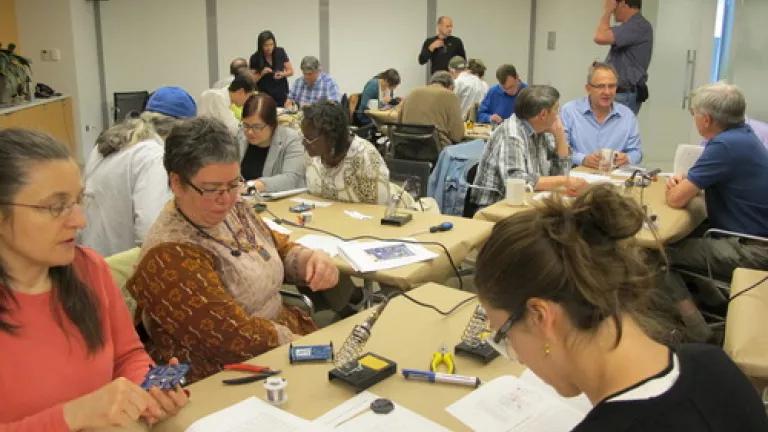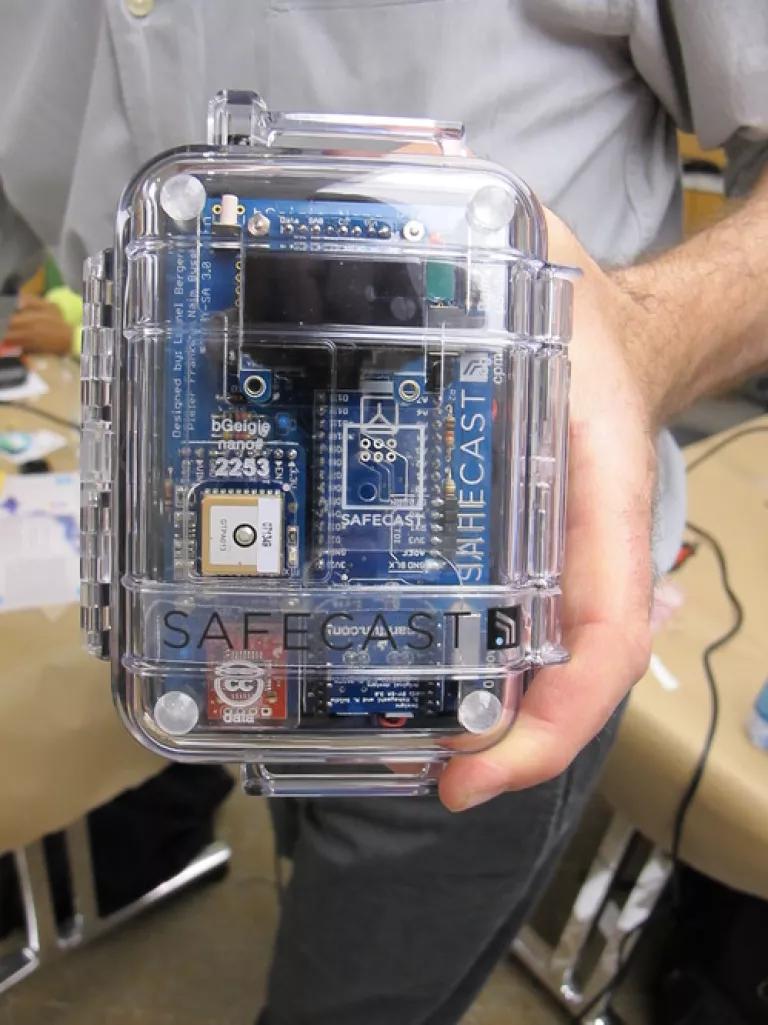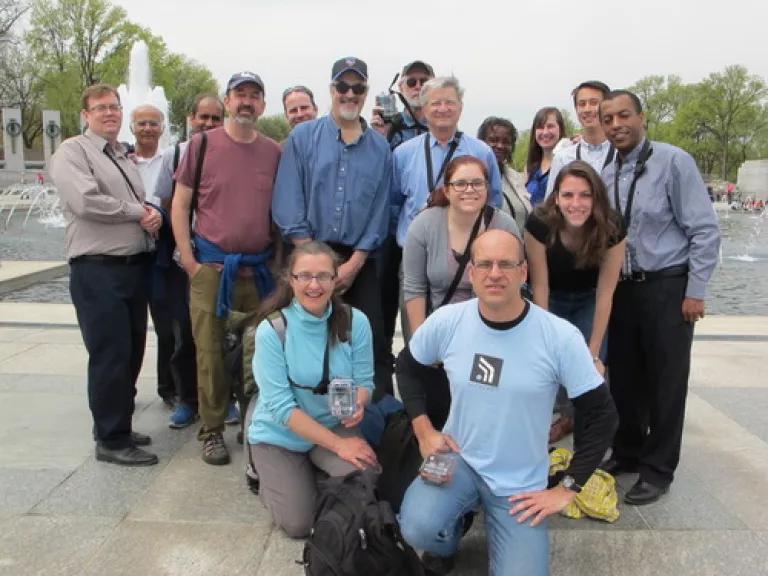
The Washington DC office of NRDC hosted a two-day workshop on April 21st and 22nd, 2014 entitled bGeigie Nano Detector Assembly and Radiation Field Mapping of Washington, DC. The workshop was the first event in NRDC’s citizen radiation monitoring project, funded by a Discovery Grant from the John D. and Catherine T. MacArthur foundation. The workshop was led by Safecast and by IMI International Medcom, Inc.
The goal of the workshop was for participants to learn and to network about citizen radiation monitoring, to assemble a bGeigie Nano detectors (an award-winning Safecast design for a hand-held Geiger based radiation detector), and to hold a radiation field mapping exercise in Washington, DC using the newly-assembled radiation detectors.
The workshop participants represented non-governmental organizations— BEST/MATRR, Beyond Nuclear, C-10, GA WAND, Greenpeace, IEER, NIRS, Riverkeeper, SRIC, and UCS, academia— Princeton University Program on Science and Global Security, and the federal government— DOE/NNSA and DHS/DNDO.
On the first day of the workshop, presentations on Safecast’s mission and work, and on how to assemble the bGeigie kits, were given by co-founders of Safecast Pieter Franken and Sean Bonner, and by volunteer of Safecast Joe Moross. International Medcom CEO Dan Sythe also presented on his decades of work supporting citizen radiation monitoring and designing and building hand-held radiation detectors. Participants then got to work, soldering and assembling the bGeigie radiation detectors from kits.
The radiation detector components are soldered onto a printed circuit board, and include four microcontrollers—the Arduino microcontroller that holds the Safecast firmware for the device, a data logging microcontroller to record measurements to the bGeigie’s SD card, a GPS microcontroller to pinpoint the location of the radiation measurements, and an organic light emitting diode display. The bGeigie detectors are powered by a rechargeable battery and enclosed in a water-proof and shock-resistant Pelican case.

By the end of the first day, 17 bGeigie Nano radiation detectors were assembled successfully, and the group gathered on the roof of NRDC’s building at 15th Street NW where the detectors could get clear GPS satellite signals.
On the morning of April 22, a sunny spring Earth Day in Washington, DC, participants headed to the National Mall with their assembled bGeigie detectors to perform a radiation field mapping exercise starting at the Capitol Building and walking west across the Mall to the national monuments. The bGeigie detectors were sensitive to the natural radiation given off by the massive granite construction at these sites.

The conclusion of the workshop consisted of participants practicing how to upload their bGeigie radiation measurements to the Safecast database (at http://api.safecast.org), and the group heard presentations on citizen radiation monitoring from NGOs located in Massachusetts, the Tennessee River Valley and New Mexico. Earlier that day the group was also briefed on the DOE/NNSA aerial monitoring in the aftermath of Fukushima by Dan Blumenthal.
We at NRDC learned a lot from Safecast, from International Medcom and from the groups participating in our workshop. The Fukushima Daiichi accident three years ago created an urgent need by citizens for timely, accurate radiation measurements in Japan, and Safecast formed in response by volunteers using open-source components and software to generate freely-available open data, now with over 17 million logged measurements. We at NRDC are eager to continue with this work to explore ways that technology and social networks can inform and empower individuals with data on radiation in their environments.

